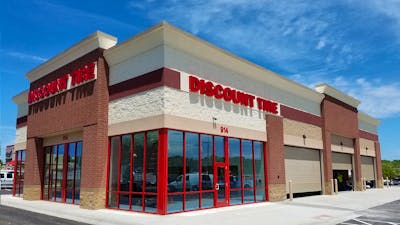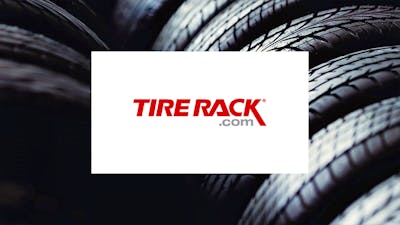What’s The Difference Between a Snow Tire, a Winter Tire, All-Terrain Tire, and an All-Weather Tire?
Get the Best Deals on Tires
Snow Tires
The one place that “snow tires” still exist is in Google searches, and your dad’s ‘78 Buick LeSabre that he bought new with his Christmas bonus from the Dixie cup factory. Tire makers haven’t marketed a “snow tire” since Cheers was on the air. In the old days, a snow tire had essentially the same rubber compound as the bias-ply hoops on your ‘67 Galaxie 500, but with a more aggressive tread pattern, and maybe the ability to accept studs.
Winter Tires
What qualifies as a “snow tire” today is marketed as a “winter tire.” What’s the difference? Many things. Beginning in the 1990s, tire manufacturers began changing the rubber compound on winter tires to stay much more pliable below freezing. For that reason alone, the name “winter tire” is a lot more meaningful. Winter tires will out-perform all-season tires in braking and cornering even on dry pavement when the temperature dips below freezing. In addition, winter tires no longer have big, heavy lugs and huge voids in the tread. Each tread block is full of “micro-sipes” -- tiny cuts in the tread block that allow the tire to move and cut through the snow to the asphalt beneath.
All-Weather Tires
As you’re about to learn, all-weather tires split the difference between an all-season tire -- which is what your vehicle most likely left the factory with -- and a winter tire.
All-Terrain Tires
In the context of winter driving, all-terrain tires have become part of the discussion. Once mainly used for serious off-roading in dry, sandy, or muddy conditions, overlanding in winter and using all-terrain tires on daily drivers is now quite common. Like all-weather tires, all-terrain tires, a.k.a. trail tires, have embraced the snow tire role.
| Design Parameter | All Season Tires | Winter Tires | All-Weather Tires | All-Terrain Tires |
|---|
Vehicle owners who brave winter driving all want to have the safest and best-performing tires available to them. If a single tire could be the best choice for dry summer driving, slushy spring and fall driving, and snowy and icy winter driving, we would all buy that tire. Due to the realities of how tires have historically been constructed, no one tire was best in all scenarios. A new category with new technology aims to change that. All-weather tires are now gaining traction in the market.
All-season tires emerged over the past quarter-century as a solution for many drivers. These are what 95% of everyday vehicles come equipped with from the factory. They strike a balance between fuel economy, performance, and comfort in mild weather. In addition, all-season tires have the ability to handle light winter weather when need be. As good as all-season tires are, they don’t have the traction that winter tires do when snow piles up or the ice is severe. For this reason, many drivers who must drive regardless of the winter weather opt to swap out all-season tires in the late fall to have the better capabilities of winter tires. They then swap back to the “3-season” tires in early spring.
Tire makers know that if they could push the envelope a bit, many of these drivers would prefer not to swap tires. So they have developed all-weather tires that are better in winter than typical all-season tires. All-weather tires, also known as variable-condition tires, incorporate some of the magic that winter tires employ to be better in wintery conditions. For some drivers, all-weather tires may be the right balance of tire for their needs.
A new sub-segment of the all-weather tire is the all-weather off-road or trail tire. These tires employ some of the same technology tricks that all-weather tires do to afford a vehicle with all-terrain capability more snow-day capabilities on and off road. These tires come with the Three-Peak Mountain Snowflake (3PMSF) rating for severe snow service.
Buy Tires Online and Save
Great prices, wide selection and unmatched convenience
All-Weather Tire Performance Ratings - Tire Rack
We reached out to two trusted resources to learn more about how all-weather tires perform. The first was Tire Rack. This online retailer has one of the best bodies of tire testing data in the world. Tire Rack has endless shopper reviews of tires categorized by year make and model of the vehicle onto which they were fitted. That makes it possible for shoppers to hear how the tires they are considering worked out for owners of cars just like theirs.
Tire Rack has tested numerous all-weather tires. Multiple brands are now available, and many are now into their third generation of all-weather tires. For example, the Michelin CrossClimate has evolved to the CrossClimatePlus, and will soon enter its third generation as the CrossClimate2.
| Tire Brand and Model | Tire Type | Cost | Treadlife Rating | Deep Snow Rating | Ice Rating | Noise Rating |
|---|
*The above chart uses data found at Tire Rack. The data for Nokian were found at Simple Tire and have been adjusted to better match the convention Tire Rack uses. Note that SimpleTire offers only one combined “winter” rating that may differ from Tire Rack’s methodology. Prices are approximate.
Tire Rack’s ratings show that all-weather tires do have better performance in wintery conditions than do all-season. Are they without compromise? Not according to Tire Rack, who posts the following notice under its all-weather tire listings: “Note: While non-winter tires featuring the three-peak mountain snowflake (3PMSF) symbol provide additional longitudinal snow traction beyond what all-season (M+S) tires not bearing the symbol can deliver, they do not match the capability of a true winter tire in all adverse weather conditions.”
Three Peak Mountain Snowflake - Meaning and Significance
The three-peak mountain snowflake symbol (3PMSF) is an industry-standard that denotes an acceptable design for severe winter conditions. It is a helpful way for consumers to quickly see that a tire is winter-capable. However, dig a little deeper and that 3PMSF designation loses a bit of its mystique. It turns out that only one test determines whether a tire earns that symbol. The single test is acceleration on snow. There is no ice testing of any kind and no test of turning or stopping ability on slippery surfaces. Helpful, for sure, but not the final word on how a winter tire will perform. Particularly since almost any all-wheel drive vehicle with all-season tires can accelerate just fine on almost any surface. Stopping and turning are the two areas in which a winter tire can make a big safety difference. These situations are not part of the 3PMSF testing specification.
All-Weather Tire Performance Results - Consumer Reports Testing The second source that we reached out about this topic was Consumer Reports (CR). We have great respect for the engineers and testing staff at CR. They generously shared their behind the scenes all-weather tire testing history with us on a long teleconference. Consumer Reports does test tires on ice. They do so at a skating rink near their headquarters. Like all CR testing, the tire ice testing is meticulously planned and executed. As any hockey player knows, the friction of an ice surface can vary dramatically from day to day. To help make the data they gather more valid, CR goes so far as to roughen the surface of the ice in a uniform way, and they run a control tire on the surface to verify that the ice testing conditions meet their uniform standards. On days when the ice temperature or the rink’s relative humidity fall outside of the specified range, they don’t test.
We communicated with three experts on tires at Consumer Reports and spent a lot of time speaking with and listening to Eugene Petersen. Gene’s 25th year in tire testing came and went this October. To say Gene is one of the world’s top experts on tire performance is an understatement.
Gene explained to us that overall, CR does feel that all-weather tires have a valid place in the market. Gene articulated that many drivers do not want to swap tires twice each year and deal with the associated costs and storage hassles. However, as a result of extensive Consumer Reports testing over more than five years, the group has decided that all all-weather tires are not best grouped with winter tires, but rather, high-performance all-season touring tires. In fact, the Michelin CrossClimatePlus earned the very top spot in that tire category in recent CR testing. This coming December is the Consumer Reports spotlight issue on tires if you are looking for a place to learn more.
In 2015, Consumer Reports produced a video highlighting the capabilities of two new tires. The Toyo Celsius and the Nokian WR G3 were tested. Both were early versions of all-weather, variable-condition tires. In the video, CR concludes, "Based on the overall score, they outperformed many winter tires we have tested." This would seem to indicate that all-weather tires were the slam dunk choice of those looking for a winter-capable tire with no hassles. However, we learned there is more to the story after a discussion with Gene about the video. Also true is that many winter tires have outperformed all-weather tires with regard to severe winter condition testing done by CR. It is overall that the all-weather tires rank highly. Factors such as noise, dry weather ability, and tread wear are part of those considerations. Those who use winter tires understand they wear more quickly than all-season tires and hum a bit more on the highway. That is due to the differences (advantages) in their winter tread design and compound.
We reached out to Michelin and communicated with Phil Watson, a Michelin employee we know from various testing events. Bearing in mind that Michelin has a robust business selling dedicated winter tires, Phil says that the new all-weather tire technology in the CrossClimate2, “… is Michelin’s biggest technological advancement in passenger tires in 20 years.” Michelin says that its new all-weather tire “...delivers up to 31% better snow traction when worn than four leading all-season worn competitive tires.”
In addition to Michelin, Firestone, Toyo, Vredestein, Goodyear and others now offer all-season (or as we call them, all-weather) tires rated for severe snow service sporting the 3PMSF symbol.
There are now four tire category choices for those who drive in wintery conditions. All-season tires do a fair job in any weather. However, there are better options for those who regularly drive in severe winter weather. Those who want the ultimate in winter safety and performance will find it in a dedicated winter tire. Those drivers who do not want to have to swap tires twice each year, and who are looking for less noise and better dry-weather performance than a winter tire design will provide, should take a close look at an all-weather tire. Those who use their tires off-road and also need on-road snowy weather capability should consider a modern all-terrain or trail tire with the 3PMSF rating. In this segment, Falken and Yokohama are the brands to check out.
To learn more on this topic, check out our article on the Best Places to Buy Tires Online and Saving Hundreds.
Buy Tires Online and Save
Great prices, wide selection and unmatched convenience
FAQ
- What is the difference between all-season and all-weather tires?
All-weather tires add a bit more snow traction than all-season tires offer. All-weather tires also earn the 3-peak mountain snowflake symbol, which certifies that they meet the minimum snow acceleration requirements in testing.
- What are the best tires for all weather?
No single tire offers the best results in all weather. Instead, all-season tires try to strike a balance between road noise, tread life, and performance in a wide variety of weather conditions. All-weather tires are similar but are designed to be a bit better in snow.
- Are all-weather tires worth it?
Drivers who want the balance that all-season tires offer but are looking for a bit more winter-weather capability than an all-season tire can provide will find that all-weather tires fit the bill.
- Who makes an all weather-tire?
Notable manufacturers of highly-rated all-weather tires include Michelin, Nokian, Goodyear, Firestone, Vredestein, and Toyo.
- Can I use all-weather tires year-round?
All-weather tires are well-suited to year-round use. They offer good tread life ratings, fair noise ratings, and perform well in all weather.
- Do all weather-tires count as snow tires?
Yes, all-weather tires are rated for snow. In fact, they earn the 3 peak mountain snowflake designation, which certifies they meet the minimum requirements for snow acceleration.
- Can all-terrain and trail tires be used in snow?
Yes, they can. Both all-terrain tires for serious off-roading as well as trail tires for overlanding now come with the three-peak mountain snowflake symbol denoting severe snow service capability. Yokohama’s Geolander series and Falken’s WildPeak series are good places to start.













